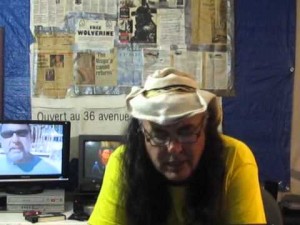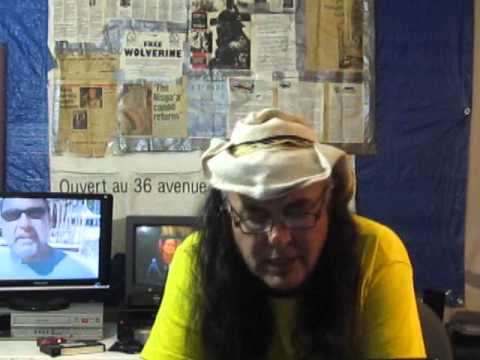By Sophie Isbister (Opinion Editor) – Email
 On the last day of classes for the Fall 2010 semester, Professor Christine Elsey made history at the University of the Fraser Valley.
On the last day of classes for the Fall 2010 semester, Professor Christine Elsey made history at the University of the Fraser Valley.
When the anthropology instructor wanted to invite indigenous musician and filmmaker Donald Morin to come speak to her class, she was faced with a geographical challenge. The problem? While Morin was agreeable to speaking to Elsey’s class, his work was keeping him in his current home of Edmonton, Alberta.
Determined to bridge the divide of the Rockies and bring an important and relevant voice in Canadian film-making to her class, Elsey had the brilliant idea to use the internet video chat program Skype in one of the smart classrooms at UFV. Morin’s presentation to Esley’s ANTH 111 (British Columbia First Nations) class was the first of its kind in the institution. “The IT guys had never even heard of it,” she laughed.
Morin gave an hour-long lecture to Elsey’s class, entitled, “We are the people, the land, and the enemy; who defines the system, the laws, and the jails; where do our children fit in this age of prophecy and sorrow.”
The lecture covered issues from Morin’s childhood, including his personal experience with the “60’s scoop” – a calculated effort by the government to adopt Metis and Indigenous children out of their families. During this period, Morin and his siblings were taken away from their mother and scattered throughout different foster homes. According to the Department of Indian Affairs, over 11,000 status Indian children were removed from their homes – often without consent – before the practice was stopped in the mid 1980’s.
At the age of 54, Morin is currently working on a film called Wissakadewnini; the title is a Cree word which roughly translates to “Half Burnt Woodsman,” a reference to his father, who is the subject of the film. Morin spent much of his life in Vancouver’s East Side, working as a singer-songwriter, visual artist, dancer, and filmmaker. He is a graduate of the Simon Fraser University film program.
“It was a total multimedia presentation in any way you could imagine,” Elsey said of the Skype presentation, during which Morin also performed some of his music. She continued: “It was really moving, because we had him talking up there, and then we had a Q&A … He answered all [the students’] questions. That was a really big part of it.”
Elsey noted that the process was quite easy to set up in UFV’s smart classrooms, which include a computer hooked up to a projector and speakers; the only outside equipment needed for the live chat broadcast was an external microphone so that the students could interact with Morin. She added that the sound and image quality was very clear.
Political in nature, the lecture that Morin delivered spoke about the social issues which relate to his work. This work, along with his own personal story, is an important piece of Canada’s political and cultural history. Having primary sources speak live in the classroom is an educational asset, and technology such as Skype – when used in a university setting – has the potential to empower many different voices and make teaching more dynamic. As Elsey explained: “It really showed me I can bring anyone in [to speak] from any part of the world.”


